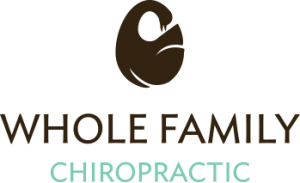Beyond the Label: Helping Kids with ADHD Signs Thrive Without Just More Meds
As a parent, are you exhausted from watching your child struggle with ADHD signs despite trying every traditional approach?
Maybe you’ve sat through countless doctor’s appointments. The pattern is familiar: a quick diagnosis, a prescription, and if that didn’t help, the dosage increased or the medication changed. Like many parents we see in our office, you’ve probably felt frustrated because no one was willing to talk about anything beyond medication.
If you’ve started to wonder, Is there something more I can be doing for my child’s long-term success? — this is exactly what we’re here to explore.
The Problem with the Current ADHD Approach
In the U.S., more than 7 million children have been diagnosed with ADHD. Yet, testing and treatment methods haven’t changed much in 20 years.
They’re still focused on labeling:
-
Inattentive ADHD
-
Hyperactive ADHD
-
Or a combined type
What’s missing is the deeper question: why? What’s actually going on beneath the surface to cause these struggles?
What We Do Differently
In our office, instead of relying only on traditional checklists or brain-focused testing, we measure your child’s nervous system to get to the root of the problem.
Through gentle, non-invasive scans, we often see two common patterns:
-
The “Raging Bull” — a nervous system stuck in overdrive, fueling hyperactivity.
-
The “Drunken Bull” — a disorganized nervous system, often linked to inattentiveness.
These patterns often map to what teachers and doctors describe as hyperactive vs. inattentive ADHD — but with one major difference: we’re not stopping at the label. We’re identifying what’s feeding into the brain from the body itself.
James’ Story
James was in 5th grade when his parents brought him in. He was a classic “Raging Bull” — full of energy, constantly getting “fix-it tickets” at school, and unable to slow down once he got revved up.
His parents didn’t want to rely on medication. They wanted a different approach.
After starting neurologically focused chiropractic care, something incredible happened: James went a full month without a single ticket — after previously getting several every week.
We didn’t “treat ADHD.” What we did was help James’ nervous system regulate itself — activating his “brake pedal” so his brain could stay organized and calm, even in situations that used to overwhelm him.
Why the Body Matters as Much as the Brain
Most ADHD discussions center on the brain — especially the prefrontal cortex (focus, attention, regulation) and the limbic system (emotions, behaviors).
But here’s the key: both of these areas are constantly influenced by the cerebellum, which processes sensory input and movement.
If stress signals are constantly flooding from the body into the cerebellum, the rest of the brain shifts into fight-or-flight mode. That stress then shows up as hyperactivity, inattention, meltdowns, and struggles in the classroom.
By calming the body and restoring balance in the nervous system, we can help the brain function more clearly and efficiently.
The Hidden Strengths in Every ADHD Brain
Too often, ADHD is treated only as a deficit — grades slipping, meltdowns over homework, low self-esteem. But in our office, we see something more: hidden strengths.
-
Hyperactive kids often process the world faster than anyone else. With the right tools, they excel.
-
Inattentive kids are often wildly creative, artistic, or visionary — seeing beauty others miss.
When their nervous system is balanced, kids can harness these traits as superpowers instead of being held back by a diagnosis.
The Next Step for Your Child
Whether your child is more “Raging Bull,” “Drunken Bull,” or a mix of both, the first step is understanding what’s driving their behaviors.
That’s why our scans are so valuable: they allow us to look beneath the surface and see what’s truly happening in your child’s body and nervous system. From there, we can build a personalized plan to help them feel calmer, more focused, and more confident — without relying solely on medication.
If you’d like to know more about what your child’s scans might reveal, we’d love to connect. Reach out through our website, call, or email us — and let’s help your child discover the superhero strengths inside their brain.

